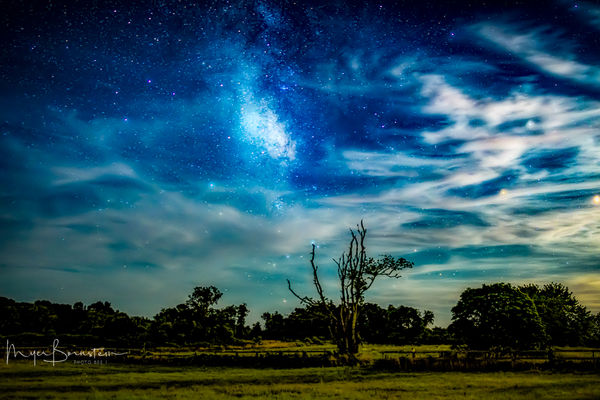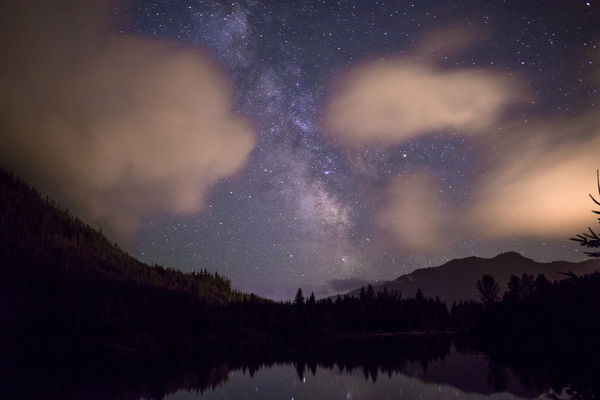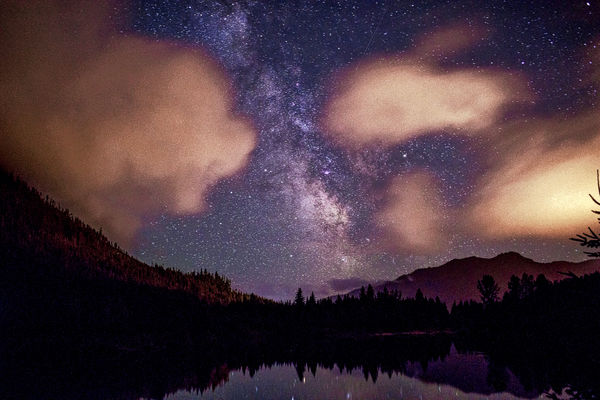Need tips on atrophotgraphy methods/post processing
Jul 25, 2017 19:26:44 #
SirMontgomery
Loc: Seattle
I understand the basics of astrophotography,how to get a good exposure ect. I recently upgraded to one of the best cameras on the market for this, the pentax k1, and I want to push it to it's limits. These are just 30 second exposures at ISO 1600 on a 28mm SMC f2.8 film lens at f/3.5 to help with the extreme vignetting. I'll be buying a 24mm f/1.4 later this week as I do a lot of landscape photography. I also ordered a remote shutter so I caan start to use the astrotracer function.
I need advice on the post processing methods and pointers on stacking/dark images/ect, it's all new to me. I've never stacked images, I was always a one shot and done photographer (probably stems from film).
In the google drive folder I added the raw DNG files, if you can show me the way these come out properly edited and how it was done I would be incredibly thankful, I played with both of these for about 90 minutes a piece with shoddy results even after reading some online guides.
https://drive.google.com/open?id=0B5asYiM2YoEQRVZneGdYQU1ZTG8
I need advice on the post processing methods and pointers on stacking/dark images/ect, it's all new to me. I've never stacked images, I was always a one shot and done photographer (probably stems from film).
In the google drive folder I added the raw DNG files, if you can show me the way these come out properly edited and how it was done I would be incredibly thankful, I played with both of these for about 90 minutes a piece with shoddy results even after reading some online guides.
https://drive.google.com/open?id=0B5asYiM2YoEQRVZneGdYQU1ZTG8
Jul 25, 2017 19:31:29 #
I don't think your results are at all shoddy and I would be proud to have taken and processed these.
I'm tagging along in hopes of learning some answers to your questions.
Edit: You might want to have a look-see and add this post here: http://www.uglyhedgehog.com/s-109-1.html
I'm tagging along in hopes of learning some answers to your questions.
Edit: You might want to have a look-see and add this post here: http://www.uglyhedgehog.com/s-109-1.html
Jul 25, 2017 20:01:21 #
SirMontgomery
Loc: Seattle
BassmanBruce wrote:
I don't think your results are at all shoddy and I would be proud to have taken and processed these.
I'm tagging along in hopes of learning some answers to your questions.
Edit: You might want to have a look-see and add this post here: http://www.uglyhedgehog.com/s-109-1.html
I'm tagging along in hopes of learning some answers to your questions.
Edit: You might want to have a look-see and add this post here: http://www.uglyhedgehog.com/s-109-1.html
I reposted the thread there with some additional info on the file
Jul 25, 2017 22:14:31 #
I like them just the way they are! But I'm not you and your wants are important. When you figure it out, show us both this photo and your "fixed" photo!
Jul 26, 2017 06:47:47 #
SirMontgomery wrote:
I understand the basics of astrophotography,how to... (show quote)
I bought Alan Woodworth's Making the Milky Way Pop videos Excellent Adam Woodworth Photography, LLC
www.adamwoodworth.com

Jul 26, 2017 08:24:04 #
photoMark
Loc: South Texas
SirMontgomery wrote:
I understand the basics of astrophotography,how to... (show quote)
I just did a quick edit using Luminar on one of your images! It is very easy to learn and use, and Macphun has great customer support. Right now it is for Mac only, but they have a beta version out for PC now. I'm still a single shooter myself, but I'll start out with a base exposure around f/4 @ 20 seconds and ISO 4000 with my 17mm, and vary the settings a little from there, based on how the image looks on the screen. Learn the 500 rule so you can set the maximum shutter speed for the particular lens that you'll be using to prevent star trails. Once you get use to what you can do with editing, you will be able to visualize what the final product will look like just based off of what you see on the camera screen. I think you did a very good job on these shots! Good luck!
Jul 26, 2017 10:13:02 #
Jul 26, 2017 15:11:24 #
In Astrophoography stacking is generally done using video and a program like Registax. 15 seconds of video will produce 450 frames for stacking. But I don't believe the shutter speed will be able to capture the Milky Way that way as long exposures are required.
Using the 28mm lens, the rule for avoiding star trails is 600/28=21 seconds exposure max. Avoiding star trails will produce stars as single points of light instead of short lines. Take the shot hands off on a sturdy tripod out of the wind, with the 10 second delayed shutter release, to avoid any camera shake. With the 24mm lens your maximum exposure time would be 600/24=25 seconds. You also want to use as wide an aperture and lowest iso possible (preferably iso 100) to avoid noise.
Using the 28mm lens, the rule for avoiding star trails is 600/28=21 seconds exposure max. Avoiding star trails will produce stars as single points of light instead of short lines. Take the shot hands off on a sturdy tripod out of the wind, with the 10 second delayed shutter release, to avoid any camera shake. With the 24mm lens your maximum exposure time would be 600/24=25 seconds. You also want to use as wide an aperture and lowest iso possible (preferably iso 100) to avoid noise.
If you want to reply, then register here. Registration is free and your account is created instantly, so you can post right away.






